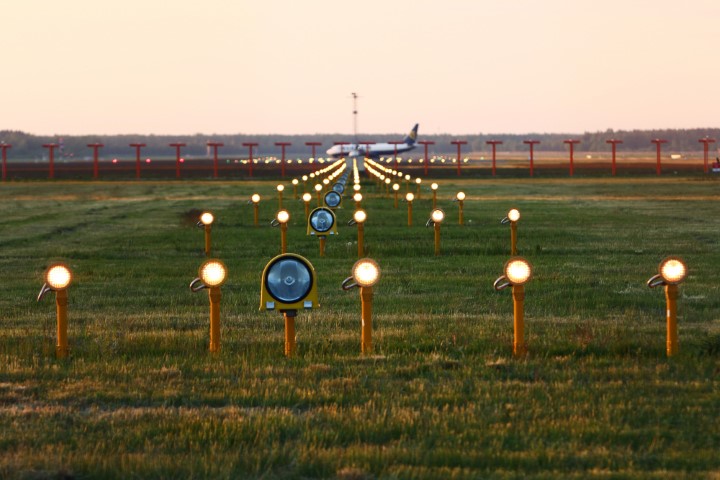Runway excursions are the leading cause of accidents in business aviation, according to the Flight Safety Foundation (FSF). Let’s define what a runway excursion is, how to prevent it, what causes it, and what are some examples of runway excursion incidents involving business jets.
What is a Runway Excursion?
A runway excursion is a runway safety incident in which an aircraft makes an inappropriate exit from the runway surface. Runway excursions include runway overruns, which occur when an aircraft is unable to stop before it reaches the end of the runway, and runway veer-offs, which occur when an aircraft departs the side of the runway. Runway excursions can happen during takeoff or landing, and involve many factors ranging from unstable approaches to the condition of the runway.
How to Prevent Runway Excursions?
Preventing runway excursions requires coordination and commitment among numerous industry stakeholders, including aerodrome operators, aircraft operators, air navigation service providers, aircraft manufacturers, regulators, and the International Civil Aviation Organization (ICAO). The Global Action Plan for the Prevention of Runway Excursions (GAPPRE) was developed by an international team of more than 100 aviation professionals from more than 40 organizations, coordinated by the Flight Safety Foundation and EUROCONTROL. The GAPPRE provides recommendations and guidance material for each stakeholder group, as well as research and development recommendations for states, international organizations, and the industry.
Some of the key recommendations for aircraft operators are:
- Conduct a runway excursion risk assessment for each airport and runway used, taking into account runway length, width, slope, surface condition, obstacles, weather, and operational factors.
- Implement standard operating procedures (SOPs) and training programs that emphasize the importance of stabilized approaches, go-around decision making, landing performance calculations, and runway condition assessment and reporting.
- Equip aircraft with runway overrun prevention systems (ROPS) or equivalent systems that provide real-time information and alerts to the flight crew on the available landing distance and the required braking action.
- Use all available means to enhance situational awareness during takeoff and landing, such as runway status lights (RWSL), enhanced flight vision systems (EFVS), synthetic vision systems (SVS), and head-up displays (HUD).
- Report any runway excursion events or hazards to the relevant authorities and share the lessons learned with the industry.
- Comply with procedures and regulations that govern your flight operations, such as the ICAO Annex 14, the Global Runway Safety Action Plan (GRSAP), and the Global Action Plan for the Prevention of Runway Excursions (GAPPRE).
What Causes a Runway Excursion?
There are many factors that may cause a runway excursion, including runway contamination, adverse weather conditions, mechanical failure, pilot error, and unstable approaches. According to the Flight Safety Foundation, these are the common causes of runway excursions for business jets:
- A go-around was necessary but not conducted
- Long touchdown
- Gear malfunction
- Ineffective braking due to hydroplaning, runway contamination, improper technique, etc.
Key Regulations to Prevent Runway Excursions
Here are crucial regulations to prevent runway excursions and ensure the safe operation of aircraft during takeoff and landing. Following these guidelines is essential for maintaining aviation safety and minimizing the risk of incidents associated with runway excursions.
- ICAO Annex 14 is a part of the Convention on International Civil Aviation that contains the Standards and Recommended Practices (SARPs) for airport design and operations, which States undertake to apply. It covers topics such as aerodrome certification, physical characteristics, obstacle restriction and removal, visual aids, electrical systems, aerodrome operational services, and aerodrome maintenance. It also refers to various manuals, procedures and circulars that provide guidance and support for the implementation of the SARPs.
- The Global Runway Safety Action Plan (GRSAP) is a document that provides recommended actions for all runway safety stakeholders, with the aim of reducing the global rate of runway excursions and runway incursions. It was developed by an international team of more than 100 aviation professionals from more than 40 organizations, coordinated by the Flight Safety Foundation and EUROCONTROL. It is linked to the ICAO Global Aviation Safety Plan and the Global Action Plan for the Prevention of Runway Excursions (GAPPRE).
Safety is paramount in aviation, and Just Aviation leads the way in runway safety solutions. Our expert guidance and state-of-the-art technologies minimize the risk of runway excursions, ensuring the safety of both passengers and crew. Partner with us to enhance safety standards and instill confidence in your operations. Trust Just Aviation to keep your flights on course, minimizing runway excursions for a safer aviation experience.
